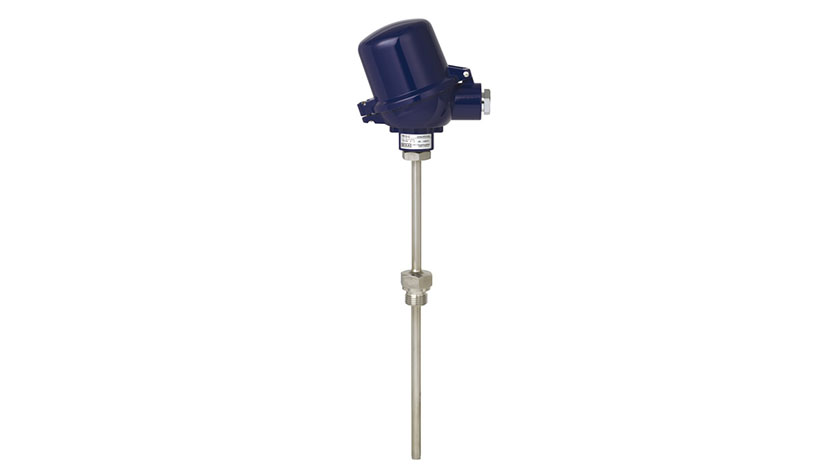
Answers to questions to help explain the operation of RTD sensors and the pros and cons of negative temperature coefficient (NTC) sensors and positive temperature coefficient (PTC) sensors based on platinum, such as the Pt100 and Pt1000.
Resistance temperature detectors (RTDs) are among the most commonly used industrial temperature measurement instruments today because of their versatility, accuracy, repeatability, ease of installation, and relatively wide measuring range. Despite all their merits, RTDs are more expensive than industrial thermometers or thermocouples, and can only be used to measure temperatures up to about 1,000°F (538°C).
How does an RTD sensor work?
The functional unit in an RTD is a sensing element that uses the change in electrical resistance in metal wires – typically platinum, copper, or nickel – to determine temperature changes. The electrical resistance of the wire at a specific temperature is already known so the known resistance can be used as a constant to compare against the resistance at that moment to calculate changes in temperature in a target object. RTD sensors can be produced as:
- Wire-wound RTD elements made of metal wire wrapped around a glass or ceramic bobbin, which is then covered and sealed with glass.
- Partially supported wound RTD elements formed with a wire coil inserted into the open bottom of a hollow ceramic insulator.
- Thin-film RTD elements, where a thin layer of platinum or other metallic glass is deposited onto a ceramic substrate. Although thin-film sensors are more accurate and last longer, they cost more than other types of sensors for resistance thermometers.
Why is platinum the most popular metal for RTD sensors?
Platinum (Pt) has several properties that make it ideal for use in an RTD sensing element or RTD sensor. For starters, it is extremely chemically inert. This in-demand noble metal has an almost linear temperature-versus-resistance relationship, and a significant enough temperature coefficient of resistance to create measurable resistance changes as the temperature moves up and down. Platinum also allows sensors to produce stable temperature readings, as the electrical resistance of platinum does not degrade over time. The only major drawback to platinum is its high cost.
What are the differences between Pt100, Pt1000, and NTC sensors?
The Pt100 and Pt1000 platinum-based sensors are positive temperature coefficient (PTC) sensors that can provide accurate temperature measurements up to 500°C. The two types are identical except that the Pt100 offers 100 ohms resistance at 0°C and the Pt1000 offers 1000 ohms resistance at 0°C. Negative temperature coefficient (NTC) sensors are inexpensive and common in many low temperature applications, but can only be used for temperatures up to 150°C. Note that the resistance of NTC sensors is reduced as the temperature increases, while the resistance of PTC sensing elements increases as the temperature rises.
Pt100 and Pt1000 sensors meet international standards (IEC 751 / DIN EN 60 751), while NTC-based sensors do not. The lead resistance in the supply line in an RTD sensor has a negative impact on the accuracy of temperature measurement. The Pt1000 more effectively compensates for lead resistance than the Pt100, and can reduce the influence of the supply line by as much as a factor of 10.
How do I know which RTD sensor is best for my application?
Determining the ideal sensor for your specific application depends on a number of factors, including:
- The temperature of your processes
- Your accuracy requirements
- The physical layout of your process infrastructure
Once you have this information in hand, it’s easy to choose a resistance thermometer and the type of sensor and other accessories you need using WIKA’s Quick Ship Guide. If you need a custom solution or have questions about resistance thermometers with either Pt100 or Pt1000 sensors, contact WIKA’s knowledgeable technical support team for assistance and answers.

